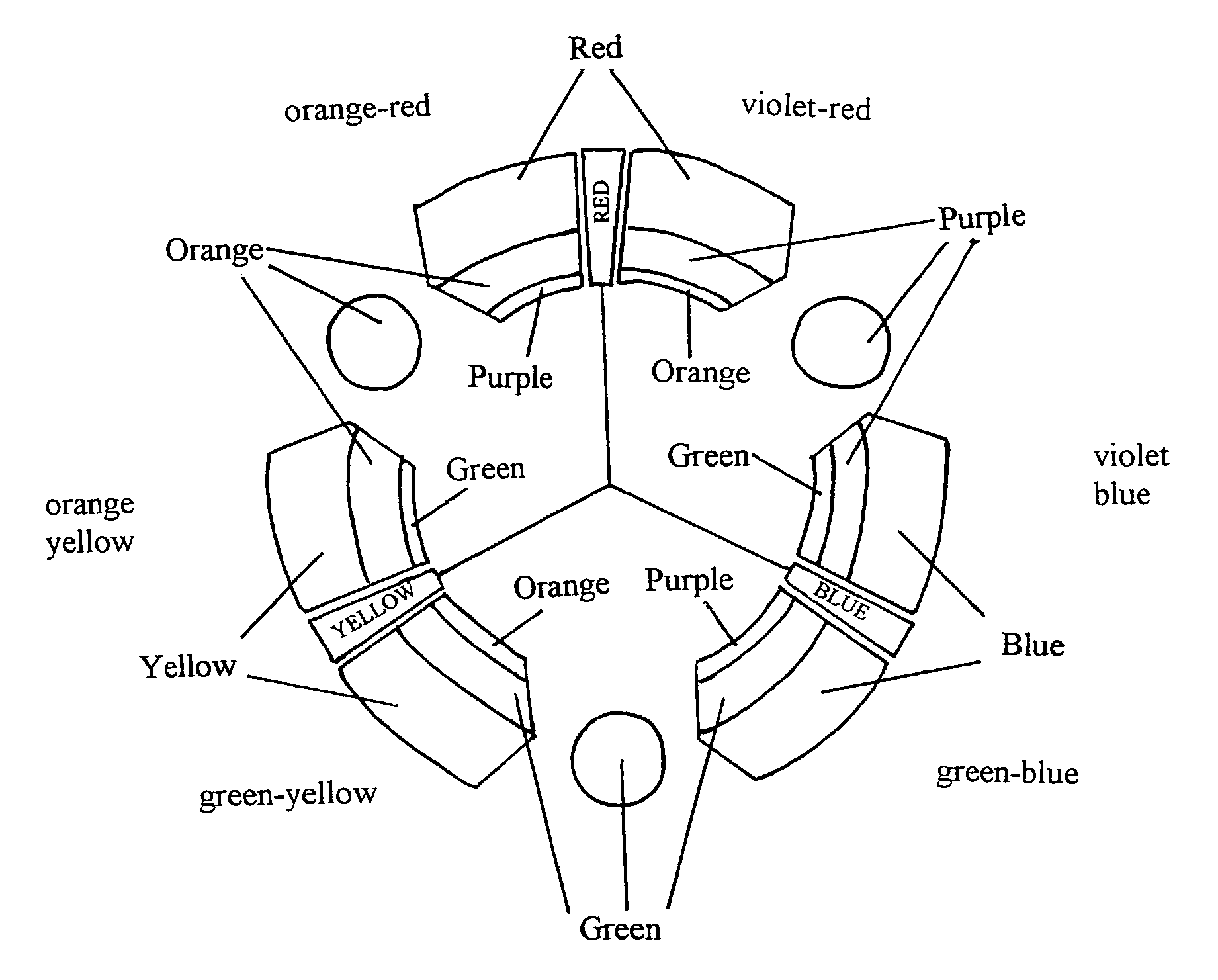Printing system
a printing system and printing technology, applied in the field of printing systems, can solve the problems of inability to reproduce the work of artists satisfactorily, the four colour process is not accurate, and the wide range of colours is to be reproduced
- Summary
- Abstract
- Description
- Claims
- Application Information
AI Technical Summary
Problems solved by technology
Method used
Image
Examples
Embodiment Construction
[0040]The six colours listed above have been selected for their ‘leaning’ or ‘bias’ in order to give a widened range of mixes. The six colour-types are defined by their bias toward or away from the ‘secondary’ colours of orange, green and violet. As used herein the expression “orange-red” refers to a colour which when analysed spectroscopically, reflects in order of ‘quantity’ or intensity, red followed by orange and then violet. The relative quantities or intensities of each colour can be determined by comparing the areas under the graphs of reflectance (percent) versus wavelength occupied by the specified colour.
[0041]Similarly the expression “violet-red” refers to a colour which when analysed spectroscopically, reflects in order of ‘quantity’ or intensity, red followed by violet and then orange.
[0042]The expression “violet-blue” refers to a colour which when analysed spectroscopically, reflects in order of ‘quantity’ or intensity, blue followed by violet and then green.
[0043]The ...
PUM
| Property | Measurement | Unit |
|---|---|---|
| wavelength range | aaaaa | aaaaa |
| wavelength range | aaaaa | aaaaa |
| wavelength range | aaaaa | aaaaa |
Abstract
Description
Claims
Application Information
 Login to View More
Login to View More - R&D
- Intellectual Property
- Life Sciences
- Materials
- Tech Scout
- Unparalleled Data Quality
- Higher Quality Content
- 60% Fewer Hallucinations
Browse by: Latest US Patents, China's latest patents, Technical Efficacy Thesaurus, Application Domain, Technology Topic, Popular Technical Reports.
© 2025 PatSnap. All rights reserved.Legal|Privacy policy|Modern Slavery Act Transparency Statement|Sitemap|About US| Contact US: help@patsnap.com



